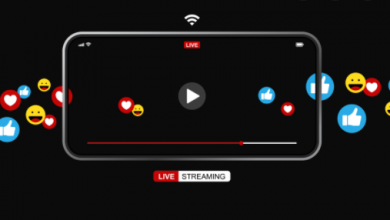
The rising demand for high-speed data and the availability of devices encourage people to spend more time on the internet. You might have been browsing for a while and exploring new things. As you know browser is vital for such activities.
When it comes to browsers, Google Chrome stands on the top. It has over 70% share in the global desktop internet browser market. It may be the default browser of your device.
Some people claim that their Chrome browser lags and doesn’t function fast. It hampers the surfing experience and creates irritation. Well, I will share some quick solutions to speed up Google Chrome.
Let’s jump into it.
1 – Update Chrome Browser
The slow Google Chrome fix should start with a browser update. The latest version of the Google Chrome browser comes with performance improvements and you can also enjoy the latest features.
Google has released the latest Chrome 96 update that brings a speed boost for desktop/laptop users. It is equipped with the back-forward cache feature. This feature saves web pages that you have recently visited. When you use Chrome’s back or forward buttons the page will be loaded instantly. The pages are stored in the cache and don’t run any Javascript. So there would be no performance hamper or battery drain.
Google usually pushes stable updates every six weeks. But security patches come more often than the stable update. Normally, Google Chrome automatically download updates in the background when you open the browser. However, you can check for updates immediately and install them.
Updating Google Chrome is very simple and straightforward. Follow the below steps to update Google Chrome.
Step 1 – Open the Google Chrome browser on your computer
Step 2 – Click on the 3 vertical dots icon and hover your mouse cursor over Help.
Step 3 – Now you can see 3 options. Click on the About Google Chrome option.
Step 4 – Now Chrome will check for any update and immediately download if available. If the latest version already installed Chrome will say Google Chrome is up to date.
Step 5 – Once the download is completed you can see a Relaunch button. Click on that and wait to restart Chrome and finish.
2 – Stop Videos from Auto Playing
You might have noticed that some websites use auto video players. Video will start playing once you land on the page. If you have ever visited a website to watch TV series or movies then some of them have this auto-play video feature. Some well-known websites including YouTube, CNN, also added such videos.
Videos playing in the background consumes a lot of data and slow down the Chrome performance. Most of the video players mute while playing. So you can’t notice it even playing. Stopping such videos can speed up Google Chrome on the desktop.
Unfortunately, Google Chrome has no option to stop auto-playing videos. But some third-party extensions are available that block such videos. One of the extensions we recommend is the AutoplayStopper. This in-browser tool automatically detects auto-playing videos and stops them immediately.
As you know Google Chrome for Android doesn’t support extensions. So you can’t stop auto-playing video in Chrome on Android, iOS devices.
3 – Close Unused Tabs
We often have so many tabs for multi-tasking. This is a common habit and everyone does the same. If you are gathering information from multiple sources then multiple tabs can be beneficial. But we often forget to close a tab once completed.
Every tab you open in the Chrome browser consumes resources (RAM), which can eventually result in significant performance issues. So it is recommended to close unused tabs and keep the number to a minimum. Each tab acts as an independent browser and demands the same memory as the neighbor.
While browsing the web, just keep your eyes on the number of the opened tab. 4-5 tabs can be manageable simultaneously. But more than that can lead to browser lag and performance issues. Better to close if you are no longer using that tab. To save system memory and prevent your PC slowdown this method is useful. Chrome has to reopen the closed tab feature and you can take the benefit of it.
4 – Manage Browser Extensions
Chrome Web Store is filled with a myriad of extensions. These extensions add new functionality and extend the capabilities. But people add many extensions that lead to Chrome slowdown and performance issues.
Browser extension management is one of the key things that most users neglected. If you are not using an extension, then better to remove it. You might know how to install Chrome extension from Chrome Web Store. Now I will show you how to remove it.
Step 1 – Launch the Chrome browser and click on the 3 vertical dots icon.
Step 2 – Find the option named More Tools and hover your mouse cursor over it. Then click on the Extension option.
Step 3 – Here you can find all the extensions installed in Chrome. Figure out the extension that you want to remove.
Step 4 – Click on the Remove button to erase the extension. Otherwise, toggle the switch to disable it.
5 – Cleanup Your Computer
Do you know Chrome offers a clean-up tool to boost performance? Sometimes the browser is affected by unknown malware or ads. To protect your valuable data and provide a safe environment, Google has introduced a cleanup tool.
This feature stops intrusive pop-up ads and unknown web pages appear. Chrome Cleanup tool automatically checks for suspicious programs installed on your PC. It warns you when something mysterious is discovered.
To manually start the tool, follow the below steps.
Step 1 – Open Chrome and click on the 3 dot menu
Step 2 – Then follow Settings > Advanced > Reset and clean up > Clean up computer >
Step 3 – Now click on the Find button to start the process.
The process can take a few minutes and wait until finished. If any suspicious program is found, you would get the option to remove it.
6 – Check Chrome Task Manager
All the operating systems have a built-in task manager to monitor the activities and programs running. Google Chrome also has the same feature. Using this tool you can see the resource-hungry extensions that cause Chrome to slow down.
To open task manager in Chrome follows the below steps.
Step 1 – Open the Chrome browser and click on the 3 vertical dot icon.
Step 2 – Then click on More tools and then Task manager.
Now you can see all the tabs, extensions, and another processes currently running on the browser. Stop any of them using the End Process button.
7 – Reset Chrome
If non of the above methods works and Chrome still feel sluggish, use this last method. This reset feature fix most of the issues as Chrome became a new browser. All the settings will be back to the default.
To reset Chrome follow these steps.
Step 1 – Open the Chrome browser and click on the 3 vertical dot icon.
Step 2 – Click on Settings and then Advanced
Step 3 – Scroll down and click on Restore settings to their original defaults.
Step 4 – A popup will appear and click Reset settings to continue.
Conclusion
So these are some of the easiest methods you can try to speed up Google Chrome. The popular browser continues to evolve with regular updates. Developers are working hard for providing you with an awesome browsing experience. If you feel sluggishness in Chrome then use the above tricks and the issue would be fixed quickly.




